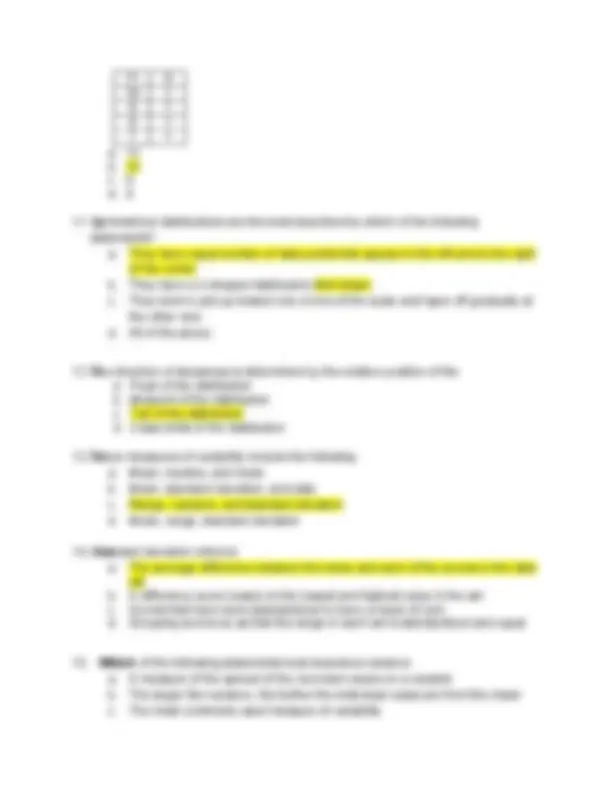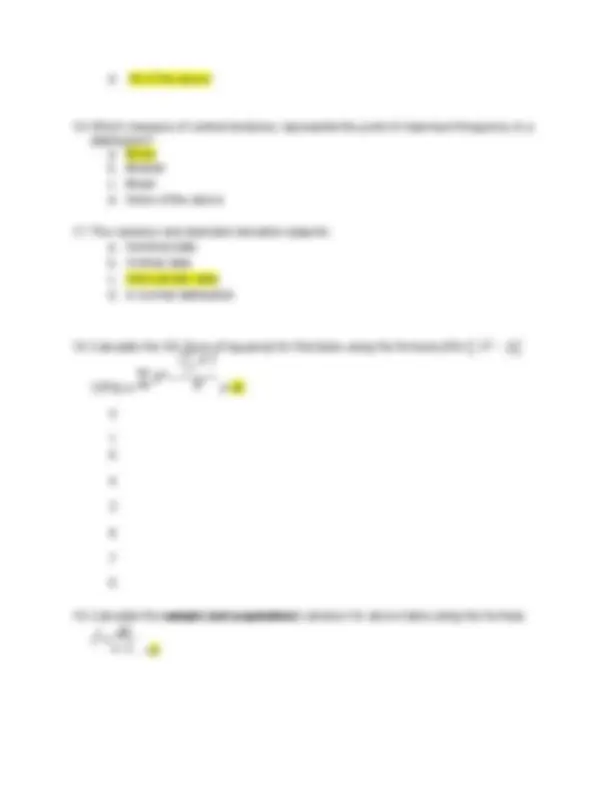





Study with the several resources on Docsity

Earn points by helping other students or get them with a premium plan


Prepare for your exams
Study with the several resources on Docsity

Earn points to download
Earn points by helping other students or get them with a premium plan
Community
Ask the community for help and clear up your study doubts
Discover the best universities in your country according to Docsity users
Free resources
Download our free guides on studying techniques, anxiety management strategies, and thesis advice from Docsity tutors
NSG 481: Biostatistics and Applied Epidemiology Quiz #1
Typology: Quizzes
1 / 5

This page cannot be seen from the preview
Don't miss anything!




NSG 481: Biostatistics and Applied Epidemiology Quiz # Name:
c. To report the discrepancy or amount of error exists between a sample statistic and the corresponding population parameter. d. To report a characteristic or condition that changes or has different values for different individuals
d. All of the above
2
n − (^1). = 6 X)^2 /n] or X
Wegesin and Stern (2004) found greater consistency (less variability) in the memory performance scores for younger women than for older women. The following data represent memory scores obtained for two women, one older and one younger, over a series of memory trials. Calculate the variance of the sample (not for population) for each women using the formula SS=∑ X^2 - [(∑ X)^2 /n].